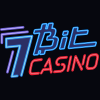A strong currency can make exports more expensive and imports cheaper, while a weak currency can make exports more affordable and encourage demand for domestic products. With its expertise in macroeconomic analysis and policy advice, the IMF helps countries design and implement sound monetary and fiscal policies. It also provides financial assistance to countries experiencing balance of payments difficulties, helping them stabilize their economies and restore growth. The Japanese yen fluctuates in value based on various economic factors, including interest rates, inflation, and trade balances. This flexibility allows the Japanese government to adjust its currency’s value to support its economic objectives.
The oldest form of money is believed to be commodity money, such as shells, grains, or precious metals, used for trade and exchange in ancient civilizations. As the world continues to evolve, our understanding and utilization of money must keep pace. The functions and characteristics of money remain fundamental, while global monetary systems and personal finance require continuous adaptation and learning. Money has played a pivotal role in shaping human civilization, facilitating economic exchange, and representing value. From its humble origins as a means of barter to the modern digital currencies of today, money has undergone remarkable transformations. Understanding the dynamics of exchange rates and their impact on global trade is crucial for businesses seeking to expand internationally.
Origins of MMT
- In economics, money is any financial instrument that can fulfill the functions of money (detailed above).
- In addition, another issue is the dependence of underdeveloped and developing countries on traditional currencies (Nelms et al., 2018).
- They regulate interest rates, control the money supply, and oversee the banking system.
- This behavior can create a vicious cycle where reduced spending leads to decreased production and job losses, further exacerbating the economic downturn.
- M2 encapsulates M1 in addition to short-term time deposits in the banks and 24-hour money market funds.
- Staying updated with changes in tax laws and regulations is also important to avoid any penalties or legal issues.
Imagine a world where we had to trade goods directly without the use of money. It would be incredibly challenging to find someone who has what we need and simultaneously desires what we have to offer. Money simplifies this process by acting as a universally accepted medium of exchange. These three functions are essential for the efficient functioning of an economy and enable us to conduct daily transactions, measure wealth, and save for the future.
- Its impact on the future of money and finance is still unfolding, but the possibilities are vast and exciting.
- The assets of the banks consist of “reserves” (currency plus deposits at other banks, including the central bank) and “earning assets” (loans plus investments in the form of bonds and other securities).
- The already widespread methods of woodblock printing and then Pi Sheng’s movable type printing by the 11th century was the impetus for the massive production of paper money in premodern China.
- At a particular moment, individuals need just cash for their everyday necessities.
- The holder who presents them to a Federal Reserve bank has no right to anything except other pieces of paper adding up to the same face value.
- A bank that received, say, $100 in gold might add 25 percent of that sum, or $25, to its reserves and lend out $75.
- A unit of account (in economics)25 is a standard numerical monetary unit of measurement of the market value of goods, services, and other transactions.
This transition allowed central banks greater control over monetary policy and the ability to adjust interest rates, stabilize economies, and manage inflationary pressures. The chief point at issue is which categories of bank deposits can be called “money” and which should be regarded as “near money” (liquid assets that can be converted to cash). Many economists include as money only deposits transferable by check (demand deposits)—in the United States the sum of currency and checking deposits is known as M1.
Navigating Taxes: The Government’s Share of Your Money
Various countries employ different currency systems to manage their economies. Some nations rely on fixed exchange rates, where the value of their currency is pegged to another currency or a set of commodities. As economies become increasingly interconnected, the need to comprehend the intricacies what are the modern forms of money of global monetary systems becomes more pressing. This knowledge allows individuals, businesses, and governments to navigate the complex web of international trade and finance with greater confidence and effectiveness. The most fundamental function of money is to facilitate transactions between individuals and businesses. It eliminates the need for complex bartering systems and allows goods and services to be exchanged effortlessly.
Other countries adopt floating exchange rates, where the value of their currency is determined by market forces, such as supply and demand. Before the advent of money, people relied on a system of barter, exchanging goods or services directly with each other. This form of trade was often limited by the requirement of a double coincidence of wants – both parties had to desire what the other had to offer.
– Currency of any country is one the modern forms of money. which includes Paper notes and coin
Deflation, on the other hand, is the opposite – a sustained decrease in the general price level, resulting in an increase in the purchasing power of money. That is, when buying a good, a person is more likely to pass on less-desirable items that qualify as “money” and hold on to more valuable ones. For example, coins with less silver in them (but which are still valid coins) are more likely to circulate in the community.
Why money acts as a medium of exchange?
What type of money is used today?
Representative money led to the use of fiat money-the type used in modern economies today. Fiat money is money that does not have intrinsic value and does not represent an asset in a vault somewhere.
This behavior can create a vicious cycle where reduced spending leads to decreased production and job losses, further exacerbating the economic downturn. Inflation and deflation are two significant economic phenomena that impact the value of money. Inflation refers to the sustained increase in the general price level, leading to a decrease in the purchasing power of money over time.
Monetary policy
Nobel Prize-winning economist Paul Krugman’s views on U.S. debt are similar to many MMT ideologues, but Krugman has been strongly opposed to the theory. In an op-ed in The New York Times in 2011, he warned the U.S. would see hyperinflation if it was put into practice and investors refused to buy U.S. bonds. The BRBNMPL is a wholly-owned subsidiary of the Reserve Bank of India (RBI). The BRBNMPL is responsible for printing all of the banknotes that are currently in circulation in India. We use innovative technology to build strong relationships and improve people’s lives in the digital age. We aim to create solutions that enhance connections and improve the human experience in the digital world.
For example, when Brazil moved from the Brazilian cruzeiro to the Brazilian real. It can also happen spontaneously, when the people refuse to accept a currency experiencing hyperinflation (even if its use is encouraged by the government). It is necessary for developing efficient accounting systems like double-entry bookkeeping. The utilization of cash has eliminated the issue of two-fold occurrence of needs. In old times when the idea of cash was not advanced, individuals used to execute through the bargain arrangement of trade.
What are the two forms of money?
a) Representative Money: Representative money is that money which is fully backed by equal metallic reserve. The holder of a bank note can easily get it converted into metallic (gold & silver) form on demand. b) Convertible Money: It is the form of money which can be converted into gold, silver i.e. metallic reserves.
Trade is an arrangement of trade where members in exchanges straightforwardly trade labor and products for different labor and products of their requirements. While the classic economics paradigm is characterized as a two-body problem (where taxes equals money in and spending equals money out), MMT turns the tax and spending factors into a three-body problem. MMT theorists explain that debt is simply money that the government put into the economy and didn’t tax back.
In a remarkable breakthrough, societies began to introduce commodities as mediums of exchange. These commodities, such as shells, beads, and salt, possessed inherent value and were widely accepted in trade. They acted as a bridge between the needs and desires of individuals, enhancing economic transactions on a broader scale. Some places do maintain two or more currencies, particularly in border towns or high-travel areas.
This article summarises and provides comprehensive notes on “Money as a Medium of Exchange”. Looking towards the future, exciting developments await, driven by technological advancements and changing societal values. The rise of digital currencies, transformative blockchain technology, and the potential obsolescence of cash are all on the horizon. The convenience of digital and contactless payments has gained traction in recent years. From mobile wallets to QR code payments, individuals are embracing these new forms of transactions. As we look to the future, several trends in the world of finance are becoming increasingly apparent.
What is the current form of currency?
Paper money
American paper currency comes in seven denominations: $1, $2, $5, $10, $20, $50, and $100. The United States no longer issues bills in larger denominations, such as $500, $1,000, $5,000, and $10,000 bills. But they are still legal tender and may still be in circulation.





